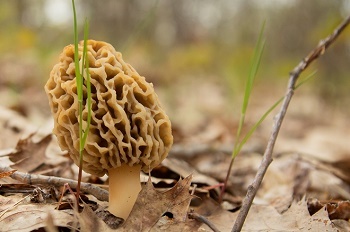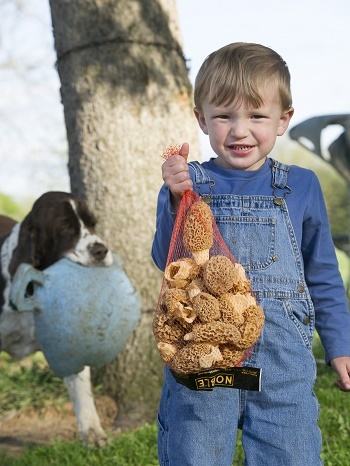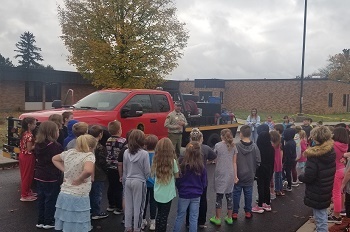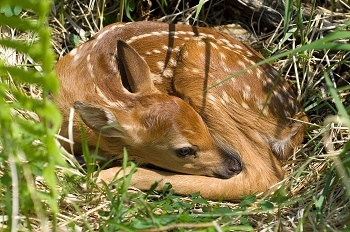|
Here are just a few of this week's stories from the Michigan Department of Natural Resources:
See other news releases, Showcasing the DNR stories, photos and other resources at Michigan.gov/DNRPressRoom.
PHOTO FOLDER: Larger, higher-res versions of some of the images used below, and others, are available in this folder.
 Want to see more pictures like this, taken by Michigan state parks photo ambassador Jamie Ball at Silver Lake State Park in Oceana County? Visit Instagram.com/MiStateParks to explore photos and learn more about the photo ambassadors! For more on the photo ambassador program, call Stephanie Yancer at 989-274-6182.

Whether it’s a walk through your neighborhood or a hike in the wilderness, or something in between, getting outside can help lower stress and improve attention, mood and connection to the earth and each other. Nature comes in all shapes and forms, and no matter how you engage with it, nature can have incredible benefits for our brains.
May is Mental Health Awareness Month, a great time to get out of the house and away from screens. There is strong evidence that nature has a huge effect on overall well-being, and incorporating a little “green therapy” into our days can help us become happier, more resilient people. If you’re feeling the strain of modern life, try getting outside – even if it’s just a little while. Take in the world around you, breathe in the fresh air and enjoy discovering how you fit in the natural world.
Lisa Nisbet, a psychologist at Trent University in Ontario, Canada, studies connectedness in nature. In an April 2020 article – "Nurtured by Nature" – by Kirsten Weir on the American Psychological Association website, Nisbet said:
“There is mounting evidence, from dozens and dozens of researchers, that nature has benefits for both physical and psychological human wellbeing. You can boost your mood just by walking in nature, even in urban nature. And the sense of connection you have with the natural world seems to contribute to happiness even when you’re not physically immersed in nature.”
Marveling at historic sites, bathing in lush state forests, exploring fish hatcheries and weirs, discovering state parks and trails – we’ve got plenty of ideas about where to build your connection to the outdoors! Get started at Michigan.gov/DNR/Places.
|

They’re found in every county in our state, but you still might be tempted to go full cloak-and-dagger or blindfold your friends before heading out to your favorite spot – it’s that time of year, the annual Michigan treasure hunt that is morel month!
Morel mushrooms are a beloved forest treat that emerge in springtime, usually when warm weather arrives following a good rain. Look for their pitted, bumpy profiles near hilly areas with hardwood trees and around burn scars where a wildfire or prescribed burn has happened.
Before you head into the forest to search for a patch, make sure you know how to properly identify morels for safety; there are wild mushrooms in Michigan that can make you seriously ill. All wild mushrooms should be cleaned and fully cooked before enjoying.
|

Learn the basics about morel mushrooms from the DNR at Michigan.gov/MiMorels. You’ll find a map of last year’s prescribed burn and wildfire areas on public lands to point you in the direction of locations where morels could grow. Find more advanced mushroom information from the Midwest American Mycological Information website.
Be aware that morels and other foraged finds on state-managed lands are for personal use only and not for resale.
Want to sell morels or other foraged mushrooms? Michigan’s food code requires certification to lawfully sell wild mushrooms. Get certified through a partner program offered by MAMI.
To learn more about wild-foraged foods and how to get started, visit Michigan.gov/Foraging or contact Rachel Coale at 517-930-1283.
Spring/summer wild mushroom clinics
And if you're looking for some expert-led guidance and hands-on learning on how to identify, find, clean and consume a variety of wild mushrooms, sign up for upcoming wild mushroom clinics at Mitchell State Park in Cadillac May 29, June 19, July 10 and Aug. 20.
|

While most people run away from a blazing wildfire, highly trained DNR wildland firefighters are ready to head toward danger to protect people, property and nature – and they have the knowledge and tools to do the job right.
May 4, International Firefighters’ Day, recognizes the courage of firefighters around the world and honors those who have lost their lives in the line of duty.
“DNR wildland firefighters respond to hundreds of wildfires every year,” said state fire supervisor Dan Laux. “Whether the fire starts on state-managed lands or in a family forest, our teams are ready to protect communities.”
Partnerships with local and federal fire units provide a strong support network across the state, and – when needed – the DNR provides tools, equipment and personnel to aid other states experiencing extreme wildfire. This allows staff to sharpen their skills and learn new techniques. Even with a cool and wet spring this year, DNR firefighters have responded to multiple wildland fires in Michigan, which have burned about 217 acres. They have also served on nine out-of-state dispatches.
|

DNR firefighters also work to improve wildlife habitat with carefully planned prescribed burns, share fire prevention tips with communities, prevent future fires by creating fire breaks (areas around vulnerable communities cleared of vegetation and combustible material to stop the spread of wildfire) and remove hazardous trees from woodland roads.
If you see firefighters in the field, give them space to do their work. Whether they’re fighting fire or performing a prescribed burn, don’t park on a roadway to watch. Please keep moving and don’t interrupt, which could endanger you and firefighters. Do not fly drones in active wildfire areas – this can be dangerous for spotter plane pilots and impede critical aerial support.
The No. 1 way to help your local firefighter is by preventing wildfires. Check if conditions are right to burn and make sure to get a burn permit before lighting yard debris. Always practice safe burning.
Interested in training to become a DNR wildland firefighter? Connect with a fire officer in your area to learn about seasonal and full-time opportunities.
Questions? Contact Rachel Coale at 517-930-1283.
|

If you’re looking for something new offering a lot of learning and always a little fun, give a listen to the DNR’s “Wildtalk” podcast, released on the first of each month.
In each episode, hosts Rachel Leightner and Hannah Schauer interview guests, cover wildlife habitat work going on throughout the state, highlight one of Michigan's wildlife species and answer listener questions. You could even win a “Wildtalk” mug – listen to find out how!
May's episode features habitat work in the southeastern Lower Peninsula, a panel discussion on the importance of leaving wildlife in the wild, and perhaps the most familiar of ducks, the mallard.
Listen to the newest episode and catch up on past episodes at Michigan.gov/DNRWildtalk, or on Apple Podcasts and Google Podcasts.
Talk back to 'Wildtalk'
For those listeners already familiar with the show, we'd like your feedback! Tell us what you think about the show in this 10-question survey. It should take just a minute or two to complete the survey, and your input will help us make “Wildtalk” even better in the future.
Questions about the podcast? Contact the DNR Wildlife Division at DNR-Wildlife@Michigan.gov or 517-284-9453.
|

A quiet spot in your backyard, a thicket or a patch of tall grass – these all are places where fawns have been found. If you do come across a fawn this spring, don’t touch it. There’s a very good chance it is right where it’s supposed to be.
A mother deer will hide her fawn to help protect it from predators, often leaving it unattended to avoid drawing attention to the hiding place. Young fawns have excellent camouflage and lay very still, making it harder for predators to find them.
“You may think these fawns have been abandoned, but that rarely is the case. The mother will return periodically to nurse her fawn when she feels it is safe,” said Hannah Schauer, DNR wildlife communications coordinator. “Your best move is to quietly enjoy the fawn from a distance, because leaving baby animals in the wild ensures their greatest chance for survival.”
It’s a frequent DNR message that bears repeating: only licensed wildlife rehabilitators may possess abandoned or injured wildlife. Unless a person is licensed, it is illegal to possess a live wild animal, including deer, in Michigan.
Just as everyone is welcome to enjoy the wonders of Michigan’s natural world, we all share the responsibility of keeping wildlife wild. Get more tips and information on what to do if you find a baby animal at Michigan.gov/Wildlife.
Questions? Contact the DNR Wildlife Division at 517-284-9453.
|
|